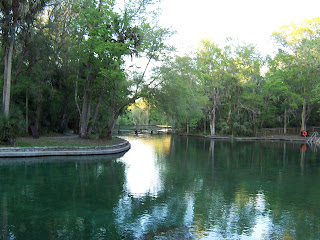Panama Canal Cruise
October, 2010
How many trips of a lifetime is a person allowed? This was another one. The Panama Canal is perhaps the greatest feat of engineering in the world, ever. To read about it and then go through it was amazing. We did this as a family trip with my mom, my sister Carol, my brother Chuck, and his wife Tami.
The trip had a few rough spots for me. Mexicana Air folded and left me to search for two whole days for a replacement flight for the last leg from Mexico City to Acapulco. I booked Interjet on a Spanish only website, not able to read a word of it. Interjet did actually exist though, and we flew on it. We stayed a day in Acapulco and saw the fearless cliff divers take their plunges. I picked up something there—Montezuma’s Revenge—and was down in bed the first day and a half of the cruise and didn’t feel good the whole trip.
Being on a cruise ship is a strange experience—so luxurious and self-indulgent. I wasn’t sure how I would avoid boredom on the days at sea, but the ship manufactures things for you to do—lectures about the shore stops, Spanish lessons, trivia, wine-tastings, pool and hot-tub, eating too much sometimes, dining elegantly most evenings. Evening entertainment is great. The piano man, Tom Franek is a good singer, great piano player and fabulous entertainer. He gets everyone involved and laughing, simply wonderful. Don is hooked on cruising; he loves the food, entertainment, pool and just the luxury of it all. I see it as a means to get to the destinations.
The second shore stop (I missed the first) was Nicaragua where Don cruised about Lake Nicaragua and its volcanic islands. I saw the Masaya volcano crater. Buses and cars are required to park facing out in case of an eruption. Masaya is active, always smoking, but no big eruption in many years. We all toured colonial Grenada where I was pick-pocketed by a 10 year old kid while buying something from his mother. How is that for lessons to teach your child?
Costa Rica and the rain forest delighted all of us. Don did an aerial tram and garden. Chuck and I went zip-lining with my son Troy who arranged a business trip to Costa Rica to coincide with the day we were there. That was wild, flying through the treetops in a harness on a cable. Whoooeeee!!! After a lunch on the seashore, we went looking for scarlet macaws. We found them eventually, but thieves found my purse and Melissa’s (Troy’s friend). I didn’t have much money since I had been robbed the day before, but replacing my favorite lipstick and sunglasses has been fruitless. Melissa had credit cards and her passport in hers, so she had it rough.
The Panama Canal—the day we all waited for so long—did not disappoint. I was glad I read David McCullough’s book, The Path Between the Seas to learn how extremely difficult the project was—tens of thousands of people died, more of yellow fever and malaria than anything else until they figured out how to control the mosquitoes. The Culebra Cut through the continental divide kept sliding into the excavation. They would dig it out and haul the mud and rock to the Pacific breakwater or to build the huge dam on the wild Chagres River to create a lake through the middle of the passageway. The mountainside would slide into the cut; they would dig it out again; it would slide in; they would dig it out again—over and over and over. There are three locks on each side to raise and lower ships 85 feet above sea level. The Coral Princess was built specifically for the canal—we had one foot clearance on each side and just enough front and back for the gates to operate. We paid $330,000 toll to transit the canal, taking ten hours for the 50 mile passage.
Jamaica was our last stop where we climbed up through the river in Dunn’s River Falls. Great fun.
We took in the Everglades after disembarking at Fort Lauderdale and then headed to Orlando to visit Tara and her family. I had a fender bender with my daughter’s car—not my fault, but nerve-wracking since I was driving without a license after the theft in Costa Rica. I gave Levi his first haircut. Time with the grandboys is always great; they are so much fun. Traveling with a suitcase is harder than the camper. I never want to come home when we are out with the RV, but with suitcases and airplane travel we were glad to get home.




















